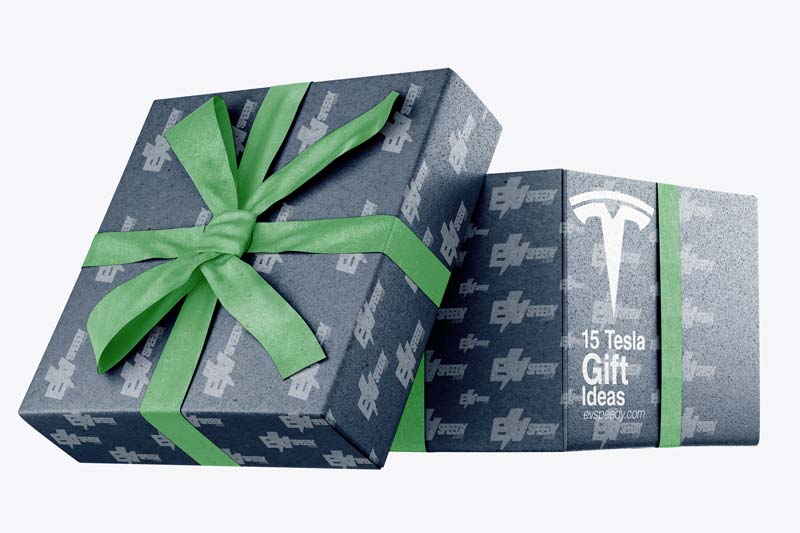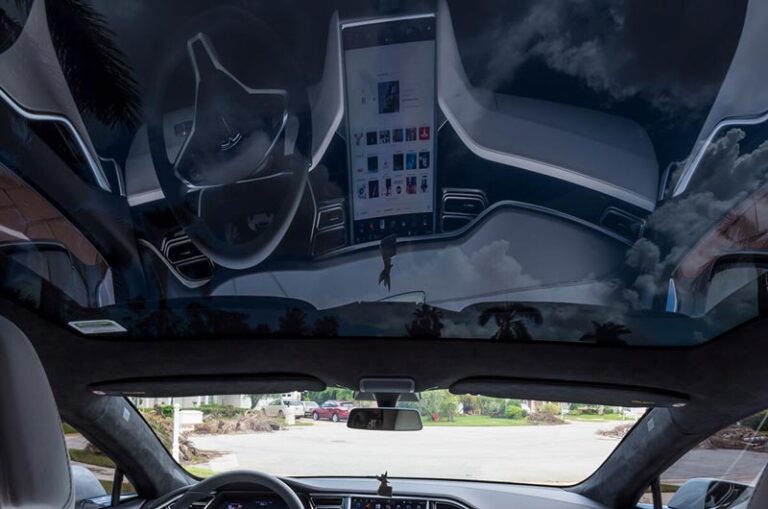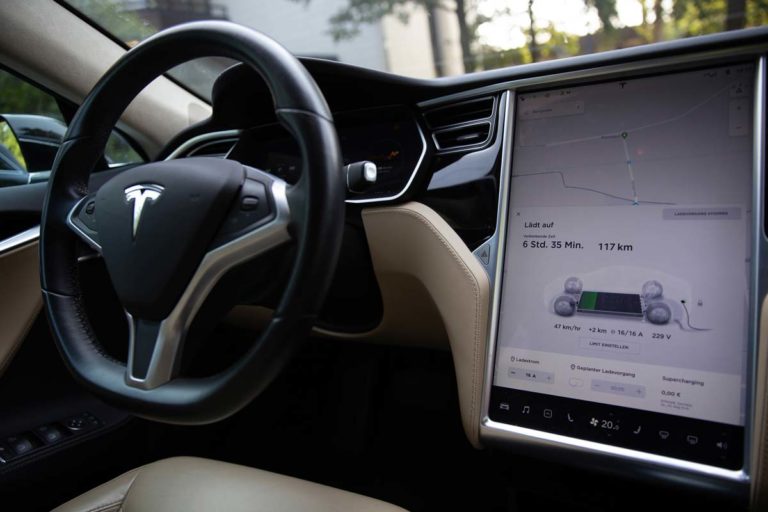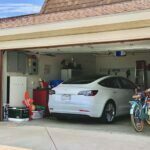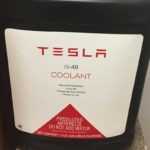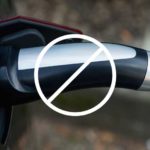Many car enthusiasts love the sporty aspects of owning a car. We all know that EV’s quick accelerations make this even more enjoyable. But can Teslas actually drift and do donuts?
It is possible to disable the ABS with a few modifications, allowing the driver to do a beautiful burnout, like any other powerful car. Its anti-lock braking system (ABS) prevents the wheels from locking up, with the traction control system (TCS) kicking in to help keep the car’s wheels from slipping.
Pulling off a burnout with a Tesla right off the factory floor is impossible. The car’s computers analyze everything the vehicle is doing and won’t let the driver do something that could damage it. Check out the rest of this article to find out more!
Defining a Burnout
A burnout is a car trick where the driver keeps the car stationary while spinning the wheels. The result is a large cloud of smoke, lots of noise, and the smell of burning rubber.
While a burnout doesn’t have any strategic benefit, it attracts a lot of attention to the driver. It’s the equivalent of a victory dance, and it’s a way to show off your car’s power.
In a professional drag racing competition, a burnout helps the car’s wheels have a better grip on the asphalt, providing better traction for when the race starts.
Modifications Needed To Do a Burnout in a Tesla
A Tesla burnout is an impressive sight. The car’s electric motors are so powerful that the tires can spin for a long time without slowing down. But before you can do a Tesla burnout, you need to make a few modifications to your car.
To pull off a successful burnout, you’ll need to disable the following components:
- Anti-lock braking system
- Traction control system
- Electronic stability control (ESC)
Random Statistic:
Tesla has snowballed since its inception and has a current market cap of $786.98 billion. Upon its completion, Tesla’s Gigafactory 1 will be the world’s largest building by footprint.
You’ll need to access the Tesla’s control unit to disable all these systems. This can be done by opening the glove box and removing the fuse panel cover.
Once you’ve located the control unit, remove the fuses for the anti-lock braking system, traction control system, and electronic stability control. With all these systems disabled, you’ll pull off a stunning Tesla burnout.
Here is a short video by RoadandTrack showing a Tesla performing a burnout after disabling the anti-lock braking system.
Fun fact: Teslas can do donuts too! Like burnouts, doing donuts also requires some modifications to the car’s computer system. With the proper adjustments, Teslas can even do a donut without you touching the steering wheel.
Safety Warning
While Tesla burnouts are impressive, they can also be dangerous. Disabling the anti-lock braking system, traction control system, and electronic stability control puts you at risk of losing control of your car. If you’re not an experienced driver, I recommend against doing this modification.
How Tesla Burnouts Compare to Other EVs and ICE Vehicles
While Tesla burnouts are possible with a few modifications, they’re not as common as with other types of cars. And the reason is simple. Most people who buy a Tesla are more interested in the car’s long-range, performance, luxury, and other green features than its ability to do a burnout.
Yet that doesn’t mean other EVs can’t do a burnout. The BMW i3, for example, is a smaller electric car that’s capable of doing a burnout. The i3’s electric motor produces 168 horsepower and 184 lb-ft (249.47 Nm) of torque. That’s more than enough power to spin the tires and do a burnout.
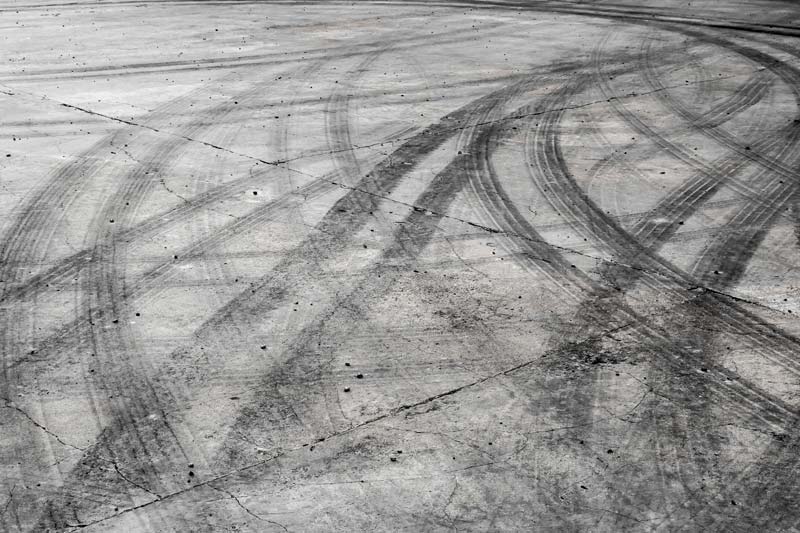
As for ICE (internal combustion engine) vehicles, they’re far better at doing burnouts than EVs. The engine’s extra weight gives them more traction, and they often have more powerful engines.
Did You Know?
Performing a burnout in an ICE is relatively easy by putting the car in first gear, flooring the accelerator, and quickly releasing the clutch. This is because the car’s engine produces more torque than the wheels can handle, causing them to spin.
Factors That Affect a Tesla’s Ability To Do a Burnout
How easy is it to do a burnout? Does the heavier weight make a difference? Before you attempt a Tesla burnout, there are a few factors you need to take into account. They affect your car’s ability to do a burnout and include the following:
The Weight of the Car
The heavier the car, the more difficult it is to do a burnout. The extra weight gives the car more traction, making it harder to spin the tires. Any shift in weight distribution can also affect a car’s ability to do a burnout.
For instance, any weight shift in the rear of your vehicle will make it harder to do a burnout and might kick the back end out, causing loss of control.
| Tesla Model | Weight (lbs) | Weight (kg) |
| Model S | 4,561 – 4,776 lbs | 2,069 – 2,166 kgs |
| Model Y | 4,398 lbs | 1,995 kgs |
| Model X | 5,185 – 5,390 lbs | 2,352 – 2,445 kgs |
| Model 3 | 3,862 – 4,048 lbs | 1,751 – 1,836 kgs |
| Cybertruck | 6,500 – 9000 lbs (Est.) | 2,948 – 4,080 kgs (Est.) |
Tesla Model
Teslas are available in five models – the Model S, Model X, Model Y, Model 3, and Cyber Truck. Each Model has a different weight, with the Model S being the heaviest at 4776 lbs. (2166.36 kg) and the Model 3 being the lightest at 4048 lbs. (1836.14 kg).
The weight is affected by the battery pack, charging hardware, suspension and framework, and electronics.
Since the Model S is the heaviest Tesla, doing a burnout is more difficult. The extra weight gives the car more traction, making it harder to spin the tires. The lightweight of the Model 3 makes it easier to pull off an impressive burnout after disabling the traction control system.
Weather Conditions
The type of weather you’re driving in will also affect your car’s ability to do a burnout. If it’s raining or the roads are wet, it’ll be harder to do a burnout. The wet conditions will reduce the traction of your tires, making it harder to spin them.
Dry conditions are the best for doing a burnout. The dry pavement provides more traction for your tires, making it easier to spin them. It’ll also be easier to burn out if the pavement is hot. The heat will cause the rubber of your tires to get softer, giving them more grip on the pavement.
Road and Surface Conditions
Like weather conditions, the type of road and surface you’re driving affects your Tesla’s ability to pull off a successful burnout. It’ll be easier to do a burnout on a smooth, level road than on a rough, uneven road.
The smoother the road, the more traction your tires will have. That extra traction makes it easier to spin your tires and do a burnout, releasing clouds of white smoke in the process.
Additionally, pulling off a burnout on a snow-covered or icy road is challenging and more dangerous. You must learn how to steer in a slide to keep control of your car. Steering in the rear-end’s direction prevents it from warping around and helps you maintain control of the car.
On a muddy road, it’s also challenging to do a burnout. The slippery nature of the mud will cause your tires to slip and lose traction. That makes it harder to spin your tires and do a burnout. If you’re not careful, you can easily lose control of your car.
Tesla Tires Wear Down Quicker From Burnouts Than Other Cars
When you do a burnout, you’re spinning your tires at high speed. That friction causes the tires to heat up and wear down quickly. And with the costs running upwards of $2,000 per set, it can get expensive quickly.
While Tesla tires are acoustic, with low rolling resistance, and provide good grip, they’re still expensive to replace. Compared to other cars, Teslas will go through tires quicker.
The added weight of the car and the high-speed spinning of the tires cause them to wear down quickly. If you’re planning on doing a lot of burnouts, be prepared to replace your tires more frequently.
How Long Tesla Tires Last
Tesla tires last for about 30,000 miles (48, 280 km). If you drive 5,000 miles (8046 km) a year, your tires will last six years before needing replacement. However, if you do a lot of burnouts, you’ll need to replace your tires more frequently.
On a somewhat related note, I wrote an info guide about Tesla wheels and tires. Find out in detail how long they actually last.
Frequently Asked Questions
Can You Do a Burnout in a Tesla Model 3?
Can a Tesla Burst Out Into Flames When Doing a Burnout?
Check out these 20 great gift ideas for yourself or a Tesla fanboy.
Contact Us if you have any questions or queries.

